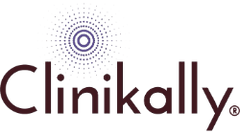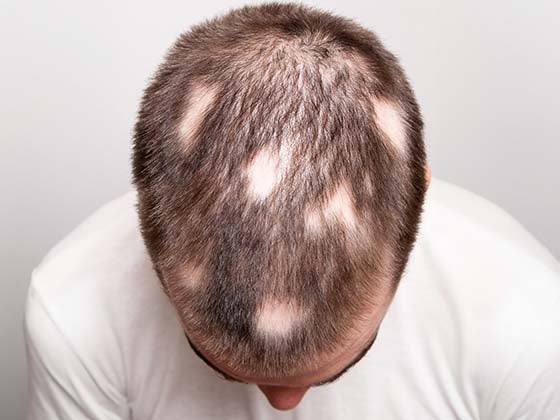Harnessing the potential of growth factors in skincare entails using products containing these strong substances to promote skin repair, renewal, and rejuvenation. This blog discusses how growth factors work and how to include them in your skincare routine.
Understanding Growth Factors

Growth factors constitute essential signalling molecules that control a variety of cellular processes involved in skin renewal, repair, and regeneration. Synthetic or plant-derived growth factors are used in skincare to promote healthier, more youthful-looking skin by increasing collagen formation, minimising wrinkle appearance, and speeding up wound healing. Adding growth factors to your skincare routine will help you attain smoother, firmer, and more vibrant skin over time.
What Are Growth Factors?

Growth factors are naturally occurring proteins that play a crucial role in regulating cell growth, proliferation, and differentiation. They are signalling molecules that interact with cells to provide them instructions on how to carry out particular tasks like protein synthesis, migration, or division. Growth factors are frequently utilised as active components in topical formulations for skincare to support skin renewal, repair, and rejuvenation.
-
Amino acid-based tiny proteins make up growth factors in most cases. Different bodily cells release them, which then interact with neighbouring cells to cause effects.
-
Growth factors attach to particular receptors on target cells' surface to start intracellular signalling pathways that control gene expression and cellular reactions.
-
Growth factors control a variety of physiological functions, such as cell division, proliferation, migration, and survival. They are crucial for the growth of tissues, the healing of wounds, the immune system, and the operation of organs.
-
Growth factors are signalling chemicals that help cells communicate with each other, facilitating the coordination of intricate biological processes and the preservation of tissue homeostasis.
-
To maintain healthy cellular function and tissue integrity, growth factor activity is strictly controlled. Cancer and autoimmune illnesses are just two of the pathological ailments that can result from growth factor signalling dysregulation.
How Growth Factors Work in Skincare
Growth factors are used in skincare to help in wound healing, collagen synthesis, cell renewal, and general skin rejuvenation. You may enhance skin health, firmness and texture, and attain a more youthful and beautiful complexion by using growth factor skincare products in your routine.
Types of Growth Factors Used in Skincare

Several growth factors are frequently utilised in skincare products to promote skin regeneration, repair, and renewal. Here are some of the main types of growth factors used in skincare:
-
Epidermal Growth Factor (EGF): EGF is a protein that promotes cell growth, proliferation, and differentiation in the epidermis, or outer layer of the skin. In skin care, EGF promotes skin renewal, speeds up wound healing, and enhances overall skin texture and tone. EGF can improve the appearance of fine lines, wrinkles, and scars by enhancing collagen production and cell turnover.
-
Fibroblast Growth Factor (FGF): FGFs are proteins that control the growth and activity of fibroblasts, which produce collagen and other extracellular matrix components. In skin care, FGFs stimulate collagen production, skin restoration, and wound healing. They can assist in increasing skin firmness, elasticity, and resilience. FGFs also promote angiogenesis (the development of new blood vessels), which improves blood circulation and nutrient delivery to the skin.
-
Transforming Growth Factor-Beta (TGF-β): TGF-β is a cytokine that regulates cell development, differentiation, and immune response. TGF-β in skincare boosts collagen formation, controls inflammation, and aids in wound healing and tissue remodelling. TGF-β promotes fibroblast activity and collagen formation, resulting in improved skin firmness, smoothness, and quality.
-
Platelet-Derived Growth Factor (PDGF): PDGF is a protein that promotes cell proliferation and migration, especially during wound healing and tissue repair processes. In skin care, PDGF enhances wound healing, tissue regeneration, and collagen formation. PDGF may help improve the look of scars, wrinkles, and other ageing indicators by promoting skin healing mechanisms.
-
Insulin-Like Growth Factor (IGF): IGF is a protein hormone that controls cell development, proliferation, and metabolism in many tissues, including the skin. In skincare, IGF promotes collagen synthesis, improves wound healing, and increases cell proliferation. IGF can increase skin firmness, elasticity, and resilience, resulting in a more young and radiant appearance.
-
Vascular Endothelial Growth Factor (VEGF): VEGF is a protein that stimulates angiogenesis (the growth of new blood vessels) and vascular permeability. In skin care, VEGF increases blood flow and nutrient delivery to the skin, which aids in tissue repair and renewal. VEGF improves skin tone, texture, and vitality by boosting microcirculation and oxygenation.
Benefits of Growth Factors for Skin Health

Growth factors have a variety of skin health benefits, including stimulating collagen production, enhancing skin renewal, accelerating wound healing, improving skin firmness and elasticity, reducing signs of ageing, restoring skin barrier function, increasing skin vitality and radiance, and supporting long-term skin health. Incorporating growth factors into your skincare routine will result in healthier, more youthful-looking skin with enhanced texture, tone, and overall appearance.
Anti-Aging Properties
Growth factors have powerful anti-aging qualities, including boosting collagen formation, speeding up cell regeneration, enhancing skin texture and tone, healing and renewing the skin, and reducing wrinkles and fine lines. By including growth factors in your skincare routine, you may effectively counteract the indications of ageing and obtain a smoother, firmer, and more youthful-looking face.
Enhancing Collagen Production

Growth factors are essential in increasing collagen production in the skin, resulting in better firmness, elasticity, and general skin health. Growth factors help to maintain a youthful and robust complexion by activating fibroblasts, increasing collagen production, improving collagen quality, promoting collagen maturation, reducing collagen breakdown, and strengthening skin structure. Incorporating growth factors into your skincare routine will help maintain and restore collagen levels, giving you smoother, firmer, and more radiant skin over time.
Promoting Wound Healing and Skin Regeneration
Growth factors promote wound healing and skin regeneration by increasing cell proliferation, improving skin cell migration, stimulating angiogenesis, promoting extracellular matrix formation, modulating the inflammatory response, accelerating epidermal and dermal repair, and reducing scarring. Incorporating growth factors into skincare products can aid in these processes, resulting in faster and more effective wound healing, less scarring, and better overall skin health.
Incorporating Growth Factors into Your Skincare Routine

Including growth factors in your skincare routine can aid with skin renewal, healing, and overall health. Here's how to add growth factors to your everyday skincare routine:
-
Choose Products with Growth Factors: Look for skincare products that have growth factors as active ingredients. These may comprise serums, lotions, masks, and specialised treatments that give growth factors directly to the skin.
-
Select Targeted Treatments: Identify your skincare concerns, such as ageing, dryness, or dullness, then select growth factor solutions designed to address them. To achieve the best outcomes, use targeted therapies that include a combination of growth factors and other therapeutic substances.
-
Cleanse Your Skin: Begin your skincare routine by washing the skin to eliminate dirt, oil, and pollutants. To avoid removing natural oils, use a gentle cleanser that is appropriate for your skin type.
-
Apply Growth Factor Serum: After cleansing, use a growth factor serum on your face and neck. Serums are lightweight formulas that carry powerful active ingredients deep into the skin. Gently massage the serum into your skin in upward and outward motions, concentrating on problem areas such as fine lines, wrinkles, or uneven texture.
-
Follow with Moisturizer: Apply a moisturizer to lock in hydration and maximise the benefits of the growth factor serum. Choose a moisturiser that is appropriate for your skin type and solves any other difficulties you may have, such as dryness, sensitivity, or oiliness.
-
Use Sunscreen: During the daytime, always apply a broad-spectrum sunscreen with SPF 30 or higher to protect your skin from harmful UV rays. Sunscreen helps prevent sun damage, premature aging, and skin cancer, ensuring the long-term health and vitality of your skin.
-
Incorporate Growth Factor Masks: 1-2 times a week, treat your skin to a growth factor mask for an extra boost of hydration, nourishment, and rejuvenation. Apply the mask to clean, dry skin and leave it on for the recommended time before gently removing and following up with your usual skincare routine.
-
Be Consistent: Consistency is essential for seeing effects with growth factor skincare products. Incorporating them into your daily skincare routine and using them consistently over time will yield the finest results. Monitor your skin's reaction to the products and adapt your routine as necessary based on changes in your skin's state.
-
Consider Professional Treatments: In addition to at-home skincare products, try adding professional treatments that use growth factors, such as microneedling or laser therapy. These treatments can boost the effects of growth factors by increasing collagen formation and fostering deeper skin regeneration.
Choosing the Right Products
Choosing the right skincare products with growth factors entails identifying your skincare concerns, understanding the ingredients, considering your skin type, researching product reviews and clinical evidence, checking for quality and reputation, considering product formulations, consulting with a skincare professional, performing patch tests, and starting slowly while monitoring results. By choosing high-quality solutions that are matched to your specific requirements, you can successfully reap the benefits of growth factors for healthier, more vibrant skin.
Application Tips for Maximum Benefits

To reap the most benefits from growth factor-containing skincare products, they must be applied appropriately and efficiently incorporated into your skincare routine. Here are some application suggestions to help you get the most of your growth factor products:
-
Start by cleansing your skin with a gentle cleanser to remove dirt, oil, and impurities. Clean skin ensures better absorption of skincare products, allowing the active ingredients, including growth factors, to penetrate more effectively.
-
Apply growth factor products to slightly damp skin, as this can enhance their absorption and efficacy. You can pat your skin dry with a soft towel after cleansing, leaving it slightly moist before applying the product.
-
Apply growth factor serums or creams to your face, neck, and décolletage area, focusing on areas of concern such as fine lines, wrinkles, and uneven texture. Use gentle, upward motions to massage the product into your skin, ensuring even distribution and absorption.
-
Avoid rubbing or pulling on the skin when applying growth factor products, as this can cause unnecessary friction and potential damage. Instead, use gentle patting motions with your fingertips to press the product into your skin, allowing it to absorb more effectively without stretching or tugging.
-
Give the product time to absorb fully into your skin before applying additional skincare products or makeup. Depending on the formulation, this may take a few minutes. Be patient and allow the growth factors to work their magic on your skin.
-
Layer growth factor products with complementary skincare products, such as moisturizers, sunscreen, or other treatment serums, to enhance their benefits. Follow the recommended order of application, starting with lightweight products and ending with heavier formulations.
-
Incorporate growth factor products into both your morning and evening skincare routines for maximum benefits. Consistent use ensures continuous delivery of growth factors to your skin, promoting skin renewal, repair, and rejuvenation around the clock.
-
Results from growth factor skincare products may take time to become noticeable, so be patient and consistent with your skincare routine. Stick to your regimen for several weeks or months to see significant improvements in skin texture, tone, and overall appearance.
-
Pay attention to how your skin responds to growth factor products and adjust the frequency of use as needed. If you experience any irritation or sensitivity, reduce the frequency of application or switch to a milder formulation.
-
For additional benefits, consider incorporating professional skincare treatments that utilize growth factors, such as microneedling, laser therapy, or chemical peels. These treatments can enhance the effects of growth factor products and promote deeper skin rejuvenation and repair.
Combining Growth Factors with Other Skincare Ingredients
Combining growth factors with other skincare components can boost their potency and provide overall skincare benefits. Here are some crucial substances that complement growth factors and can be included in your skincare routine:
-
Peptides: Peptides are amino acid chains that promote collagen formation and skin healing. Combining peptides and growth factors can stimulate collagen formation, resulting in firmer, smoother skin with greater suppleness.
-
Hyaluronic Acid: Hyaluronic acid is a humectant that draws and holds moisture in the skin, keeping it moisturised and plump. When coupled with growth factors, hyaluronic acid hydrates and nourishes the skin, improving its overall appearance and texture.
-
Antioxidants: Antioxidants such as vitamin C, vitamin E, and green tea extract assist to protect the skin from free radical damage caused by environmental factors. When combined with growth factors, antioxidants protect the skin from oxidative damage, resulting in a more young and bright complexion.
-
Retinoids: Retinoids, including retinol and prescription-strength retinoids such as tretinoin, promote cell turnover and collagen synthesis. Combining retinoids with growth factors can help with skin restoration and rejuvenation, reducing the appearance of fine lines, wrinkles, and hyperpigmentation.
-
Ceramides: Ceramides are lipid molecules that contribute to the skin's barrier function, reducing moisture loss and guarding against environmental harm. Ceramides, when combined with growth factors, help to improve skin barrier health by increasing moisture and resilience.
-
Alpha Hydroxy Acids (AHAs) and Beta Hydroxy Acids (BHAs): AHAs (glycolic acid) and BHAs (salicylic acid) exfoliate the skin, eliminating dead skin cells and increasing cell turnover. When coupled with growth factors, AHAs and BHAs improve the penetration of active ingredients, resulting in smoother, more even-toned skin.
-
Niacinamide: Niacinamide, often known as vitamin B3, has some skin advantages, including enhancing texture, lowering redness, and regulating oil production. Combining niacinamide with growth factors can help treat a variety of skincare challenges, including ageing and acne, resulting in healthier, more balanced skin.
-
Plant Extracts: Plant extracts like chamomile, licorice root, and aloe vera have calming and anti-inflammatory qualities. When combined with growth factors, plant extracts soothe and nourish the skin, minimising redness and irritation while encouraging healing and regeneration.
Personalized Skincare with Growth Factors

Personalised skincare with growth factors includes selecting targeted products, customising your routine, beginning with a clean slate, applying goods correctly, layering with more products, changing your regimen as needed, remaining consistent, and seeking professional help. By tailoring your skincare routine to your unique challenges and goals, you may maximise the benefits of growth factors and attain healthier, more brighter skin.
















